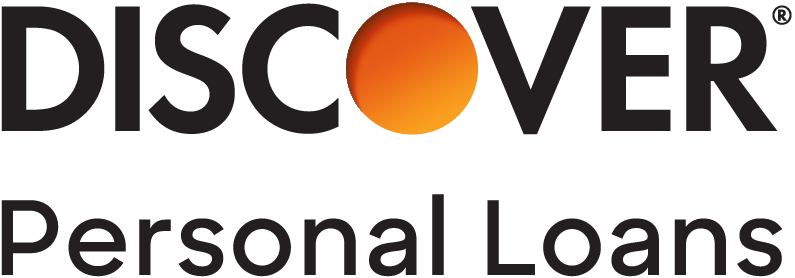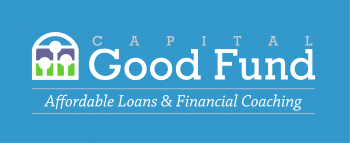Low-Income Loans: What They Are and Where to Get One
Borrowers with low income may qualify for a personal loan with certain lenders. Also consider cheaper financing options.

Many, or all, of the products featured on this page are from our advertising partners who compensate us when you take certain actions on our website or click to take an action on their website. However, this does not influence our evaluations. Our opinions are our own. Here is a list of our partners and here's how we make money.
A low income doesn’t have to stand in the way of getting a personal loan. While many lenders have minimum income requirements, others care more that you have a steady monthly cash flow.
Online lenders and credit unions may be good options for low-income borrowers or those with thin or bad credit, because they can have softer borrowing requirements or weigh factors in addition to income and credit on a loan application.
» MORE: Best personal loans
What is a low-income loan?
A low-income loan is a personal loan offered to consumers whose annual income falls at or below a specific amount. The threshold for “low income” can vary based on location, cost of living and household size.
Did you know…
The U.S. Department of Health and Human Services sets the poverty threshold as $15,650 for an individual and $32,150 for a family of four in the contiguous 48 states and Washington, D.C.
Some lenders require a minimum annual or monthly income amount, while others require only proof of regular income — regardless of the amount. In addition to listing your regular salary or wages on a personal loan application, including income from other sources — like child support, alimony and Social Security payments — can help you qualify for a loan.
» MORE: Requirements for a personal loan
Lenders with no or low income requirements
| Lender | APR | Loan amount | Minimum income requirement |
|---|---|---|---|
| 11.69% - 35.99% | $1,000 - $50,000. | None. | |
| 7.99% - 35.99% | $1,000 - $50,000. | None. | |
| 6.70% - 35.99% | $1,000 - $50,000. | $12,000 annually. | |
| 7.99% - 24.99% | $2,500 - $40,000. | $25,000 annually. | |
| 8.99% - 18.00% . | $250 - $50,000. | None. | |
| 9.95% - 35.99% . | $2,000 - $35,000. | $1,200 monthly. | |
| 0% - 18%. | $300 - $50,000. | None. |
How to qualify for a personal loan with low income
Lenders consider multiple factors, including income, when evaluating borrowers. Here are some strategies that may help increase your chances of getting approved for a personal loan if you have a lower income.
List all income sources. Borrowers with low incomes can often list earnings outside of traditional employment, such as freelancing, alimony, child support or Social Security benefits.
Consider a co-signed or joint loan. Adding a co-signer or co-borrower to your application — particularly someone with a higher income and credit score — may improve your chances of qualifying.
Consider a secured loan. Some lenders allow borrowers to use a personal asset, such as a vehicle or savings account, as collateral to secure a personal loan. Lenders view secured loans as less risky because they can take possession of the collateral if the borrower doesn’t pay the loan back on time.
Ask for less money. The smaller the loan, the less risk for the lender, so requesting a smaller loan amount may help you get approved. A smaller loan can also mean lower monthly payments and interest costs.
Lower your debt-to-income ratio. Pay off any debts that you can in order to lower your DTI. Some lenders will accept a debt-to-income ratio as high as 50%, though lower is better.
Things to consider beyond income requirements
While shopping for personal loans, look not only at income requirements but also at costs and terms.
Loan costs. A personal loan’s annual percentage rate includes interest and any origination fee the lender may charge. The higher your APR, the more expensive the loan. Many financial experts recommend steering clear of loans with APRs above 36% because such loans are unaffordable for many borrowers.
Repayment terms. Typically, personal loans have repayment terms of two to seven years. A longer repayment term means smaller monthly payments, while a shorter term means lower interest costs. If your budget is limited, a loan with a long repayment term and lower monthly payments could be easier to repay than a shorter-term loan.
Use a personal loan calculator to see how different repayment terms and interest rates affect monthly payments.
How to apply for a loan
Here are five steps to get a personal loan at any income level.
- Check your credit: Many lenders consider your credit during the loan approval process. Review your credit score and lenders’ borrowing requirements to know which lenders you may qualify with. Make sure your credit report is free of errors, such as a misspelled name or falsely reported delinquency, that could hurt your score and your chances of being approved. You can check your credit score for free with NerdWallet or request a credit report from AnnualCreditReport.com.
- Pre-qualify and choose a lender: Many lenders let you pre-qualify, which shows your estimated rate, term and monthly payment before committing to a loan. It involves a soft credit pull, which means you can pre-qualify with multiple lenders without impacting your credit score. Compare offers from different lenders to find the loan that best fits your monthly budget and needs.
- Gather your documents: Lenders will ask for documents to verify your identity, address and income. This can include copies of a driver’s license, utility bill, tax return and a W2.
- Apply for a loan: You can apply for a loan online or in person, depending on the lender. A formal application requires a hard credit check, so your score can temporarily decrease a few points at this time.
- Get funded: Some lenders offer same-day approval, but others can take a few days. If you are approved, expect to get your funds in less than a week. Your first payment will typically be due after 30 days.
Personal loan alternatives for low-income borrowers
Government assistance. The Temporary Assistance for Needy Families program offers monthly cash payments to individuals with minor children. Those who meet its eligibility requirements, including employment status and income thresholds, can apply in their state.
Assistance from local non-profits. Various nonprofit organizations, charities and community groups operate financial assistance programs to help low-income individuals meet their basic needs.
Extra money. Consider a side hustle, like tutoring or walking dogs, to boost your income. Even a temporary gig may give you the extra cash you need.
Family and friends. A loan from a family member or friend may provide you with better terms and rates — and no strict income requirement, but be mindful of the potential impact on your relationship.
Cash advance apps. Cash advance apps let you borrow from your next paycheck and are repaid on payday. They can be helpful for emergencies, but they may come with fast-funding fees and request an optional tip.
Pawnshop loans. Pawnshop loans let you use an item as collateral to secure a loan. The pawnshop will base the loan amount on the assessed resale value of your collateral. Pawnshop loans are usually for 30 to 60 days. Once you pay back the loan (plus interest), you get your item back.
Article sources
NerdWallet writers are subject matter authorities who use primary,
trustworthy sources to inform their work, including peer-reviewed
studies, government websites, academic research and interviews with
industry experts. All content is fact-checked for accuracy,
timeliness and relevance. You can learn more about NerdWallet's
high standards for journalism by reading our
editorial guidelines.
- 1. Internal Revenue Service. Retirement Topics - Plan Loans. Accessed Apr 8, 2025.
- 2. Federal Reserve Bank of St. Louis. Finance Rate on Personal Loans at Commercial Banks, 24 Month Loan. Accessed May 23, 2025.
- 3. National Credit Union Administration. Credit Union and Bank Rates 2024 Q4. Accessed May 23, 2025.
- 4. Consumer Financial Protection Bureau. Consumer Use of Buy Now, Pay Later and Other Unsecured Debt. Accessed Jan 24, 2025.
- 5. Angi.com. How Much Does It Cost to Make My Home Accessible?. Accessed Nov 12, 2024.
- 6. Consumer Financial Protection Bureau. What Is a Debt Relief Program and How Do I Know if I Should Use One?. Accessed Jan 16, 2025.
- 7. National Credit Union Administration. Payday Alternative Loans Final Rule. Accessed Apr 17, 2025.
- 8. National Bureau of Economic Research. Prodigals and Projecture: An Economic History of Usury Laws in the United States from Colonial Times to 1900. Accessed May 2, 2025.
- 9. Federal Register. Federal Interest Rate Authority: A Rule by the Federal Deposit Insurance Corporation on 07/22/2020. Accessed May 2, 2025.
- 10. Federal Reserve. Military Lending Act. Accessed May 2, 2025.
- 11. Center for Responsible Lending. Unsafe Harbor: The Persistent Harms of High-Cost Installment Loans. Accessed May 2, 2025.
- 4. Consumer Financial Protection Bureau. Consumer Use of Buy Now, Pay Later and Other Unsecured Debt. Accessed Jan 27, 2025.
- 13. Center for Responsible Lending. Payday and Other Small Dollar Loans. Accessed May 2, 2025.
- 14. Consumer Financial Protection Bureau. What is a payday loan?. Accessed May 2, 2025.
- 14. Consumer Financial Protection Bureau. What is a payday loan?. Accessed Apr 4, 2025.
- 16. The Pew Charitable Trusts. Payday Loans Cost 4 Times More in States With Few Consumer Protections. Accessed Apr 4, 2025.
- 10. Federal Reserve. Military Lending Act. Accessed Apr 4, 2025.
- 18. Internal Revenue Service. Retirement topics: Exceptions to tax on early distributions. Accessed Apr 8, 2025.
- 19. Administrative Office of the U.S. Courts. Bankruptcy Basics. Accessed Apr 8, 2025.
- 20. Internal Revenue Service. Canceled debt – Is it taxable or not?. Accessed Apr 1, 2025.
- 21. Experian and Oliver Wyman. Financial Inclusion and Access to Credit. Accessed Jan 23, 2025.
- 14. Consumer Financial Protection Bureau. What is a payday loan?. Accessed Apr 17, 2025.
- 23. Consumer Financial Protection Bureau. Truth in Lending Act (TILA) examination procedures. Accessed May 2, 2025.
More like this










